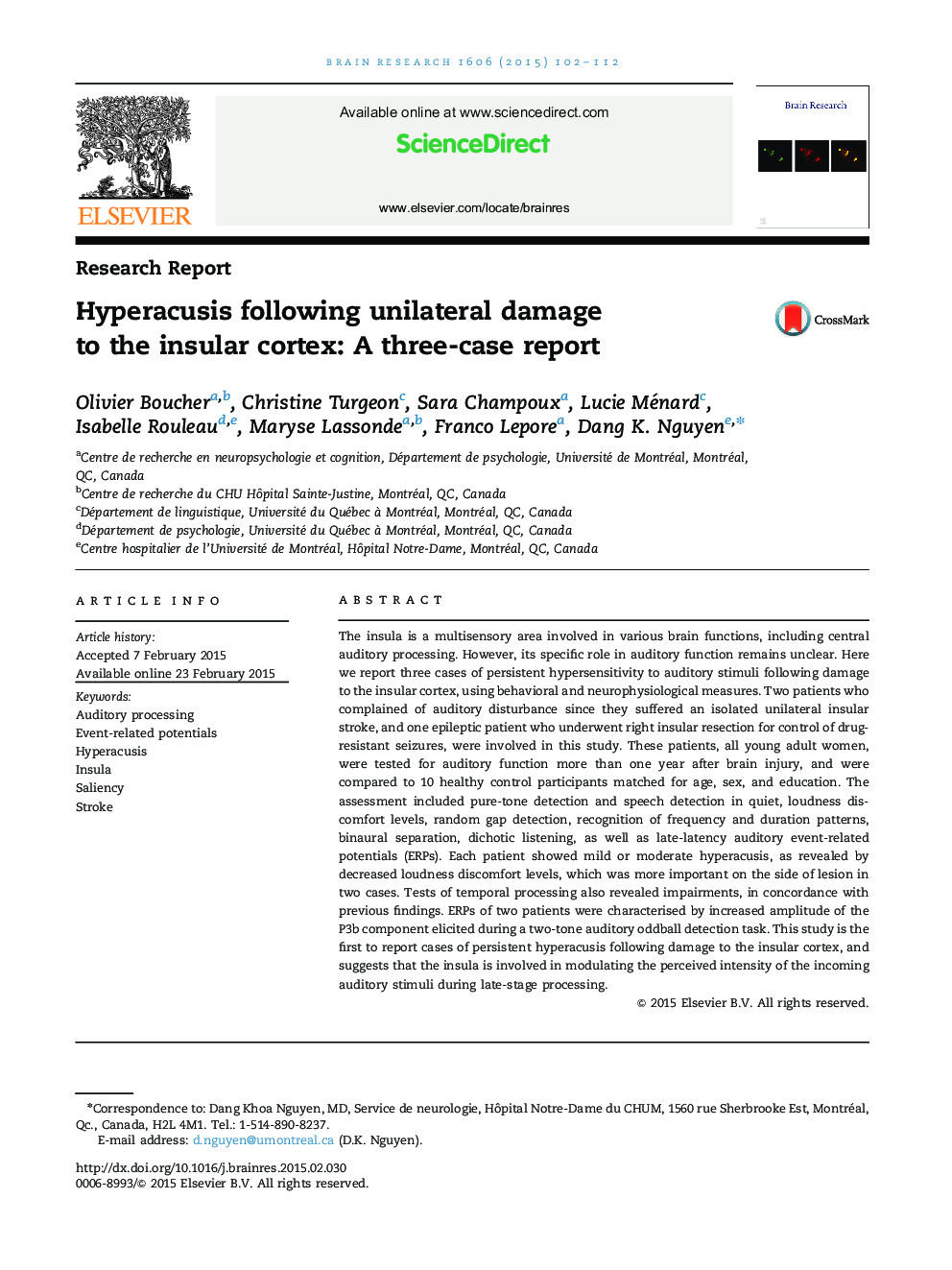| Article ID | Journal | Published Year | Pages | File Type |
|---|---|---|---|---|
| 4323910 | Brain Research | 2015 | 11 Pages |
•Hyperacusis was examined in three patients with unilateral insular damage.•In two patients, hyperacusis was more severe on the side of the lesion.•Central auditory testing revealed temporal processing deficits in each patient.•Patients showed larger P3b ERP amplitudes in response to target auditory stimuli.
The insula is a multisensory area involved in various brain functions, including central auditory processing. However, its specific role in auditory function remains unclear. Here we report three cases of persistent hypersensitivity to auditory stimuli following damage to the insular cortex, using behavioral and neurophysiological measures. Two patients who complained of auditory disturbance since they suffered an isolated unilateral insular stroke, and one epileptic patient who underwent right insular resection for control of drug-resistant seizures, were involved in this study. These patients, all young adult women, were tested for auditory function more than one year after brain injury, and were compared to 10 healthy control participants matched for age, sex, and education. The assessment included pure-tone detection and speech detection in quiet, loudness discomfort levels, random gap detection, recognition of frequency and duration patterns, binaural separation, dichotic listening, as well as late-latency auditory event-related potentials (ERPs). Each patient showed mild or moderate hyperacusis, as revealed by decreased loudness discomfort levels, which was more important on the side of lesion in two cases. Tests of temporal processing also revealed impairments, in concordance with previous findings. ERPs of two patients were characterised by increased amplitude of the P3b component elicited during a two-tone auditory oddball detection task. This study is the first to report cases of persistent hyperacusis following damage to the insular cortex, and suggests that the insula is involved in modulating the perceived intensity of the incoming auditory stimuli during late-stage processing.
